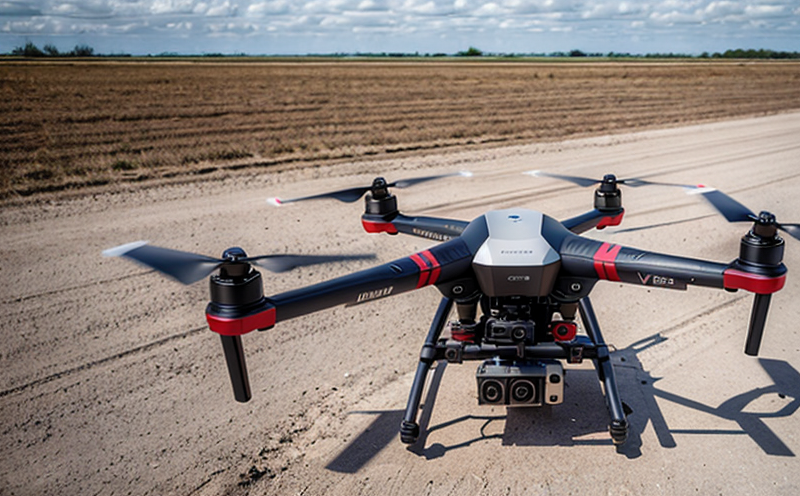FAA UAS Beyond Visual Line of Sight (BVLOS) Testing
The Federal Aviation Administration's (FAA) regulation Part 107 has revolutionized the way Unmanned Aircraft Systems (UAS), commonly known as drones, are used in commercial and recreational applications. However, beyond visual line of sight (BVLOS) operations have been subject to additional regulatory requirements since they introduce new challenges concerning safety, control, and communication.
Our specialized FAA UAS BVLOS testing services provide comprehensive support for drone manufacturers, operators, and integrators looking to comply with the stringent standards set by the FAA. This service ensures that your UAV or drone system meets all the necessary requirements before you can operate it beyond visual line of sight. From initial design reviews to final certification support, we cover every step in the process.
The testing procedures for BVLOS operations are designed to evaluate various aspects of a drone's performance under different conditions. These include:
- Communication reliability and signal strength
- Operational safety and stability
- Environmental adaptability, including weather resistance and temperature tolerance
- Emergency procedures and fail-safes
- Pilot-in-command qualifications and training
We utilize state-of-the-art facilities to conduct these tests under controlled conditions that simulate real-world scenarios. Our experienced team of engineers works closely with clients throughout the testing process, ensuring that all aspects are thoroughly evaluated.
The results of our tests provide detailed reports and recommendations tailored specifically for your drone system. These documents serve as critical tools for demonstrating compliance with FAA regulations and gaining approval for BVLOS operations. They also help identify any areas where improvements can be made to enhance performance and safety.
Our commitment to excellence extends beyond just meeting regulatory requirements; we strive to exceed expectations by offering cutting-edge solutions that push the boundaries of what's possible in UAV technology. By partnering with us, you gain access to unparalleled expertise in this rapidly evolving field, ensuring your success in navigating through complex regulations and achieving operational freedom.
Compliance with FAA Part 107 Section 23 requires rigorous testing procedures that ensure the safe operation of drones beyond visual line of sight. Our experienced professionals understand these requirements inside out and can guide you every step of the way, providing valuable insights into best practices for BVLOS operations.
Our services encompass everything from initial design reviews to final certification support, covering all phases of development and deployment. With our expertise in aerospace & aviation testing, we ensure that your drone system complies fully with FAA regulations while maintaining high standards of quality and reliability.
Benefits
Compliance with FAA UAS BVLOS testing brings numerous advantages to both manufacturers and operators. Here are some key benefits:
- Avoids Legal Penalties: Ensures that all systems meet regulatory requirements, avoiding potential fines or legal issues.
- Enhances Safety: Comprehensive testing ensures that drones can operate safely beyond visual line of sight, reducing risks to personnel and property.
- Facilitates Operational Flexibility: Compliance allows operators to perform BVLOS flights legally and efficiently, opening up new business opportunities.
- Better Performance Data: Detailed testing provides valuable insights into system performance, helping manufacturers continuously improve their products.
Quality and Reliability Assurance
The quality assurance process for FAA UAS BVLOS testing is rigorous and involves multiple stages to ensure reliability. Our approach focuses on:
- Initial Design Reviews: Early-stage assessments help identify potential issues before they become critical problems.
- Pre-Test Inspections: Rigorous checks are performed to confirm that all equipment is in optimal condition.
- In-Process Monitoring: Continuous observation during testing ensures adherence to procedures and standards.
- Post-Test Analysis: In-depth evaluation of test results to determine compliance with FAA regulations and identify any areas needing improvement.
We use international standards such as ISO 9001:2015, AS9100D, and SAE J1768 to guide our quality assurance practices. These standards help us maintain high levels of accuracy and precision in all our testing activities.
Our team of certified professionals has extensive experience working with UAV systems and understands the unique challenges associated with BVLOS operations. By leveraging this expertise, we can provide tailored solutions that meet your specific needs while ensuring compliance with FAA regulations.
International Acceptance and Recognition
The importance of international recognition in UAV testing cannot be overstated as the aerospace industry increasingly operates across borders. Here’s why it matters:
- Standardization: Adhering to globally recognized standards ensures consistency in quality and performance metrics.
- Broad Market Access: Compliance with international standards opens up opportunities for business expansion into new markets.
- Enhanced Reputation: Meeting high-quality benchmarks can significantly enhance your brand’s reputation among customers and partners worldwide.
We work closely with clients to ensure their UAV systems meet not only FAA regulations but also those of other key international bodies such as EASA (European Union Aviation Safety Agency) and CAA (Civil Aviation Authority). This dual compliance strengthens the credibility of your products globally, making them more attractive to potential buyers.
Our commitment to excellence in quality assurance and reliability ensures that our clients benefit from internationally recognized testing processes. By partnering with us, you can rest assured that your UAV systems are prepared for global success.





